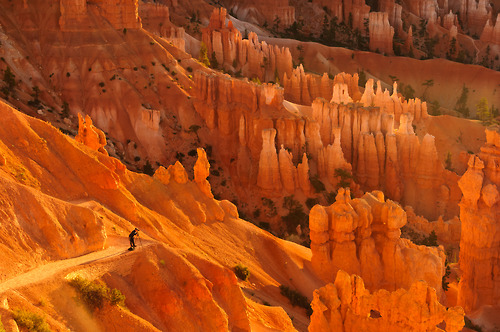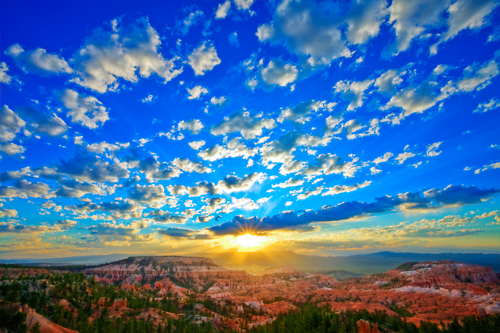Bryce Canyon National Park, famous for its worldly unique geology, consists of a series of horseshoe-shaped amphitheaters carved from the eastern edge of the Paunsaugunt Plateau. The erosional force of frost-wedging and the dissolving power of rainwater have shaped the colorful limestone rock of the Claron Formation into bizarre shapes, including slot canyons, windows, fins, and spires called “hoodoos.”
Photo: Anand Rane
Commonly referred to as America’s Big Backyard, Utah’s public lands feature some of the most spectacular and varied scenery in the world. While exploring public lands, you can’t help but take pictures of the striking landscapes. The Bureau of Land Management Utah recently invited the public to share these photos via a BLM-sponsored photo contest, so all can enjoy the special moments and places that have been captured. For the rest of the week, we will be highlighting some of the best photos that were submitted and on Friday will post the winner.
This photo came to us from Darwin Mulligan and is a beautiful shot of Bryce Canyon National Park, famous for its worldly unique geology, consists of a series of horseshoe-shaped amphitheaters carved from the eastern edge of the Paunsaugunt Plateau. The erosional force of frost-wedging and the dissolving power of rainwater have shaped the colorful limestone rock of the Claron Formation into bizarre shapes, including slot canyons, windows, fins, and spires called “hoodoos.”
What is Bryce Canyon? Attempts at description lead to paradoxes. Cave without a ceiling? Forest of stone? Even canyon is misleading since Bryce is carved by freeze-thaw cycles, not a river. Yet, “world’s largest pothole” is neither adequate nor flattering. You’ll be enticed to visit Bryce in person. Once here, maybe you’ll agree with those who simply say, “Bryce is the Bryce!”
To learn more about visiting Bryce Canyon National Park in Utah, click here.
Photo: Greg Clure - National Park Service



 Privacy
Privacy